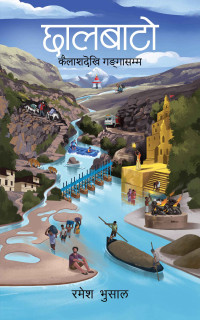Books
Retaining the original essence with a tinge of translator’s liberty
Yug Pathak on translating Ghachar Ghochar in Nepali and the state of literary translations in the country.
Samuel Chhetri
Yug Pathak is one name Nepali literature enthusiasts have held close to their hearts. Pathak, in 2017, published a collection of essays, Mangena: Nepal Manthan, where he took on core contemporary issues on Nepal’s political history and intellectualism that dominate Nepal’s political-intellectual discourse.
This year, Pathak has come up with the Nepali translation of Ghachar Ghochar, a 2015 psychological drama novella written by Kannada writer Vivek Shanbhag, which was first translated from Kannada to English by Srinath Perur. In this interview with the Post’s Samuel Chhetri, Pathak talks about his new venture, the state of literary translation in Nepal and the need of preserving native languages to further the creation of literature. Excerpts:
Tell us something about Ghachar Ghochar and the idea behind translating it in Nepali.
Ghachar Ghochar is a simple novel and makes for a good read. Unlike other stories, the novel does not idealise the characters. The title of the novel, Ghachar Ghochar, is not a word in itself but is a lingo developed through the conversations between the characters which can be loosely translated to ‘entanglement.’ And the novel tends to portray this with the inclusion of various unresolved emotions between the characters.
Two years ago, Pranab Man Singh and Prawin Adhikari of Safu Publications, who also publish the Lalit magazine, proposed its translation. After which I started reading the novel, and it certainly left a mark on my mind. I knew I could not pass the opportunity; for me, the subject and the style of the novel was something I always had a desire to explore.
Do you think you were able to retain the essence of the original in the translated version?
I have done as much as I could to preserve the original essence of the novel and keep it safe from being lost in translation. I have no knowledge of Kannada language so I had to depend on the English translation of the literature for my work.
I have to say that I have taken a translator’s liberty in various places as it is directed towards Nepali readers. I think that the meaning of translating any literature is to retain the original emotions and flavour of the book. For a Kannada reader, the local language plays a great role in understanding the characters and their story so is the case for native English readers. And I did the same for the Nepali version and tried to capture the essence of the novel.
How do you view the current state of book translation in Nepal?
At this moment, I feel that there are two types of translations that are taking place in Nepal. The first being ‘responsible translation’ and the second ‘commercial translation.’ I think we were able to follow the first type of translation for Ghachar Ghochar, as we tried our best to justify the essence, language and the style of the original writer by minimising errors.
But there are also many books that have been translated into various languages, including Nepali, just for the sake of being paid for the job. I have read a few of the translated versions of Parijat’s Sirish ko Phool, and some of them have lost the essence. Any translator must be true to the original work and must also have the knowledge of the native language that is being translated into.
What do you think must be done to preserve the essence of the original literature while translating it in, and from native languages?
Anyone who’s undertaking the work must take responsibility and translate the literature with authority. There are lots of native literature from Maithali language and Nepal Bhasa that are yet to reach the wide base of Nepali language readers. The state must also promote native languages and their literature since these languages have been denounced and suppressed for a long time.
Language is not just a means of cultural identity but it is a treasure comprising time, culture, tradition, history, and knowledge. Many emerging writers are breaking the divide of the native and standard language lately, and are infusing them into Nepali literature. This is one step towards the inclusion of native language in mainstream literature.
Are there any contemporary Nepali writers whose work you follow?
I love reading poetry and I have been following the works of a few Nepali poets including Binod Bikram KC, Swapnil Smriti and Sangeet Shrota. Also, when it comes to writers I have always admired the works of Rajan Mukarung, Sarita Tiwari, Buddhisagar and the author of Fathsung, Chhoden Kabimo. These litterateurs, in my view, have been instrumental in bringing inter-lingual contents in their works.
Which five books would you advise everyone to read?
At present, I have been immersing myself in philosophy, so one book I would suggest for reading is Yuval Noah Harari’s Sapiens: A Brief History of Humankind. The other is, Capital in the Twenty-First Century by Thomas Piketty, that talks about the crisis of capitalism in recent times. Likewise, Romila Thapar’s The Public Intellectual in India, Chimamanda Ngozi Adichie’s Half of a Yellow Sun and KP Malla’s From Literature to Culture, are a few others that I would advise everyone to read.



 19.12°C Kathmandu
19.12°C Kathmandu










